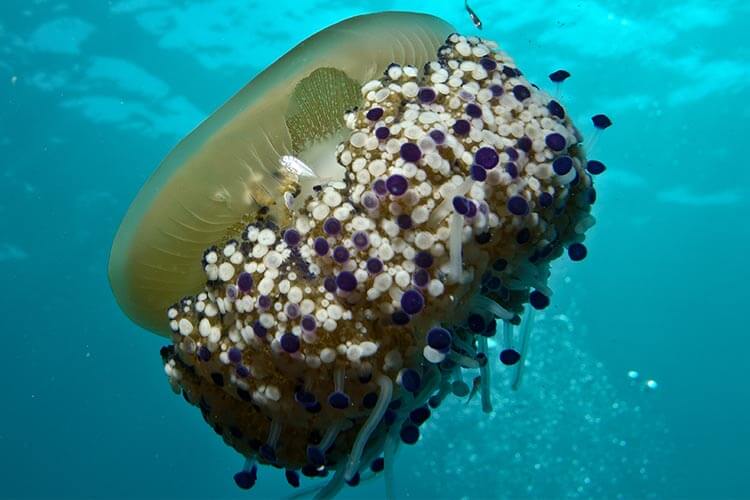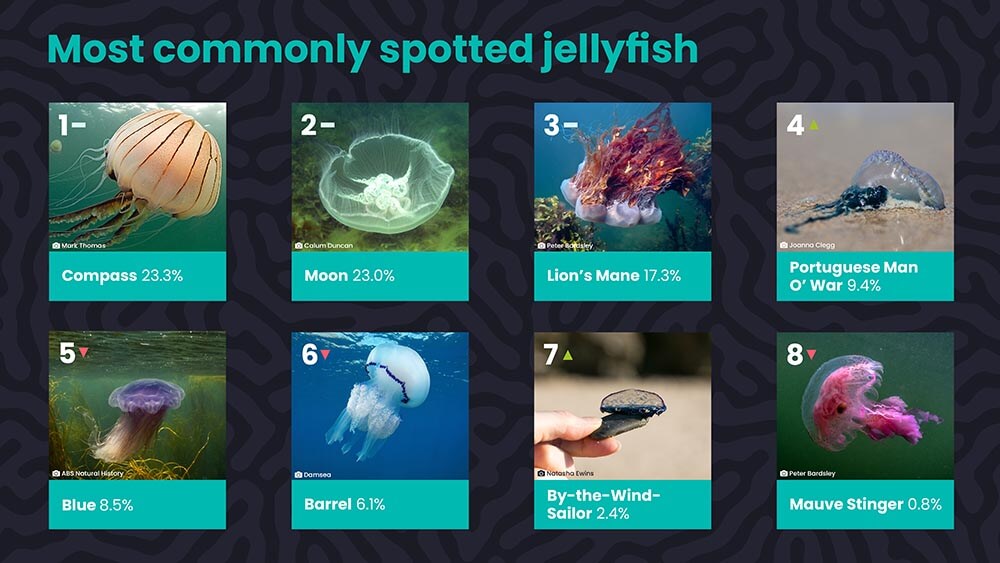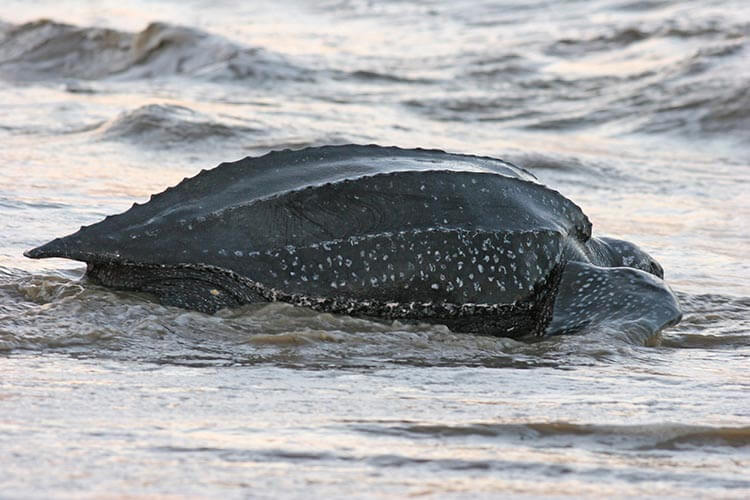
With more than 18,000 sightings of jellyfish and turtles recorded so far, the Marine Conservation Society is aiming to reach 20,000 this summer to mark the 20th year of reports
By DIVE Staff
The Marine Conservation Society’s (MCS) Wildlife Sightings programme focuses on two key marine animals: jellyfish and the turtles that follow jellyfish blooms as a source of prey. Both are key indicators of ocean biodiversity and changes to the oceans, such as warming waters.
To date, MCS has recorded 18,580 reported sightings – 18,357 of jellyfish and 223 of turtles since the survey began in 2003. This year the charity hopes to boost
Jellyfish are spotted year-round in UK and Irish waters, but larger blooms appear during spring and summer, as the jellyfish arrive in large numbers to feed on plankton blooms and the eggs and larvae of fish, crustaceans, starfish and molluscs common to the region at this time of year.
Related articles
- UK turtle strandings on the rise this winter
- Compass jellyfish most sighted UK species of 2022
- Portuguese man o’ war sightings on World Jellyfish Day
- Rare giant phantom jellyfish filmed in the Midnight Zone
- Spring jellyfish blooms bring turtles to UK shores

Records from 2022 found that compass jellyfish were the most common species reported, accounting for 23.3 per cent of sightings, closely followed by the moon jellyfish at 23 per cent. Lion’s mane and barrel jellyfish were also regularly sighted
With healthy fish stocks and rich biodiversity, jellyfish quickly become part of an effective food chain. Many species feed on jellyfish, which help provide a link between the microscopic world of plankton to larger marine animals and the ocean around them.
Jellyfish are especially appealing as a food source to turtles. Six of the world’s seven marine turtle species have been spotted around the British Isles, some of which have followed the large blooms of spring and summer jellyfish. Most common among these is the leatherback, currently listed as ‘Vulnerable’ on the IUCN Red List of Threatened Species.
MCS volunteers submitted 223 turtle sightings since the project began in 2003, fed into a national database which has recorded 946 turtle sightings over the same period. The charity hopes that turtle sighting reports will improve scientists’ understanding of their movements, potential threats and how better to protect them.

Dr Peter Richardson, Head of Ocean Recovery at the Marine Conservation Society, said: ‘Without [citizen scientist] data, we wouldn’t be able to prove that our ocean is facing problems, or push for solutions that are backed by science.
‘Data on jellyfish and turtles helps us build a picture of life in UK and Irish seas and track any changes that may occur because of things like climate change.
‘Since 2003, when our Wildlife Sightings programme began… over 18,000 sightings of jellyfish and turtles [have been reported. We want to reach 20,000 sightings to mark our 20th year of tracking these species. Every contribution to our database is crucial in learning about our seas and helps us fight to protect them.’
Sightings of jellyfish and turtles can be reported online via the MCS Wildlife Sightings portal. The charity has provided a set of identification cards to help distinguish between different species, and a Turtle Code information sheet for steps to take if a beached turtle is encountered.
For more information on how to identify jellyfish and turtles, and to report a sighting, head to the Marine Conservation Society’s website: www.mcsuk.org/sightings.


